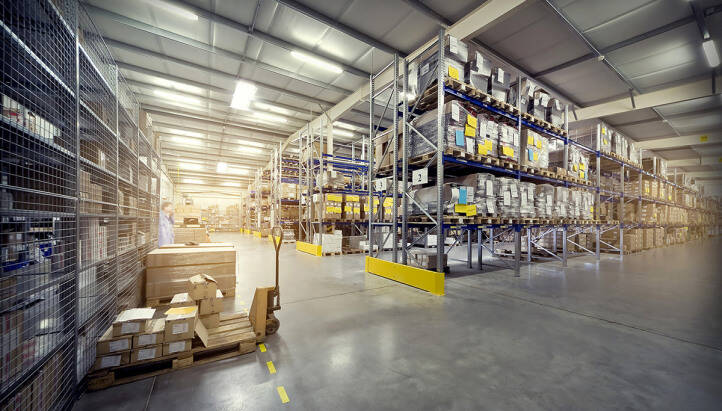The supply chain challenges many manufacturers are faced with can be complex, particularly when looking to revamp their operations to achieve net zero goals. There are many aspects of the supply chain to be considered when addressing sustainability and here we explore how manufacturers can overcome them.

What is a sustainable supply chain?
A sustainable supply chain doesn’t simply refer to the environmental impact of the supply chain but also the result of a holistic application of environmental, social, economic and legal concerns. This includes factors such as waste, carbon emissions, carbon footprint, labour conditions, health and safety and work exploitation to be considered.
Why is sustainability important in a supply chain?
For many manufacturers, the supply chain makes up a large portion of their carbon emissions which can be difficult to control and reduce. The importance of sustainability within the supply chain extends to enabling businesses to be more impactful and create positive change for their environmental footprint.
By creating a more sustainable supply chain, manufacturers can put into practice environmentally aware and eco-conscious ways of working that benefit the planet, reducing emissions, cost and boosting brand reputation.
What kind of sustainable supply chain challenges are manufacturers facing?
Increased costs
Manufacturers have been one of the industries hit hardest by the current economic impacts. Rising costs for energy, labour and raw materials to name a few, are having a significant impact on profit margins. At a time where the government are encouraging industry to invest in low carbon technologies to meet the UK’s 2050 net zero goal, many manufacturers are struggling to set aside enough budget for this whilst also tackling these rising costs.
Difficulty monitoring complex supply chains
Supply chains can be very complex, with a single product having a number of difference materials suppliers and often several suppliers are employed for each piece or product to ensure continued delivery in case one supply runs into any issues.
When it comes to inter-connected dependant supply chains, a change, no matter how small can have a ripple effect on other parts of the supply chain. Not only this but it can also be difficult to keep track of all sustainability measures applied in a product’s supply chain.
Lack of alignment in responsibility across supply chains
For manufacturers looking to switch to sustainably sourced and manufactured products, getting suppliers on board or having to switch to new suppliers who can accommodate sustainable goals is a challenge in itself. Whilst many UK and western suppliers understand the value of sustainability within the supply chain and are actively working towards it, some suppliers from overseas and developing countries simply don’t yet understand this value and have little to no regulations enforced by their government to do so. This can make finding a sustainable supplier that can also still produce cost-effective products difficult.
So how can manufacturers build a sustainable supply chain?
1. Identify sustainability issues within the supply chain
Before taking any action, you need to know where and what needs to be addressed. Analyse the supply chain and break it down into each element to identify which could stand to be improved. The Streamlined Energy and Carbon Reporting (SECR) Scheme can help identify any areas where emissions can be improved, and many manufacturers already comply with this mandatory reporting. However, there may be other elements that aren’t so obvious such as hazardous chemicals produced by a factory within the supply chain or below standard working conditions.
2. Adopt a circular supply chain
Typical supply chains are linear in that the materials are sent to the manufacturer which are turned into a product which is sold to the consumer and then discarded of. This creates a huge amount of waste and by implementing a circular supply chain can help eliminate this waste through recycling the products and sending back to the manufacturer for reuse.
3. Reduce consumption
A large part of the supply chain process involves transport. The rising cost of fuel for HGV drivers is an increasing concern for logistics companies who may pass on this cost to the manufacturers themselves. However, there are a few ways this can be improved. Firstly, by investing in low emissions vehicles (LEVs) and electric vehicles (EVs) to reduce both costs and consumption. Or through sourcing raw materials etc. from businesses located in a closer proximity to the manufacturing site.
4. Eliminate dead mileage
However, for some manufacturers this isn’t an option, and they must continue to use suppliers much further away but this also highlights another issue. The return journey also contributes to the ever growing emissions and fuel costs. One way to tackle this is to look at ways to make the return journey more efficient through transporting materials back to the original base and or hiring out these vehicles for a portion of the return journey. These options can improve the Return on Investment (ROI) of the journey, as well as fuel and time.
5. Engage suppliers
Lastly, none of this is possible without engaging suppliers in plans to create a more sustainable supply chain. Most who do not have control over other operations within the supply chain, may need to be firm and encourage suppliers to adopt more sustainable practices. This can be done by making it a regular part of conversations, explaining the benefits and how it can increase benefits for everyone.
Manufacturers looking to create more sustainability throughout their supply chain and within their business get speak to our experts today on 01772 689250 or email hello@inspiredenergy.co.uk.
N.B. The information contained in this entry is provided by the above supplier, and does not necessarily reflect the views and opinions of the publisher


